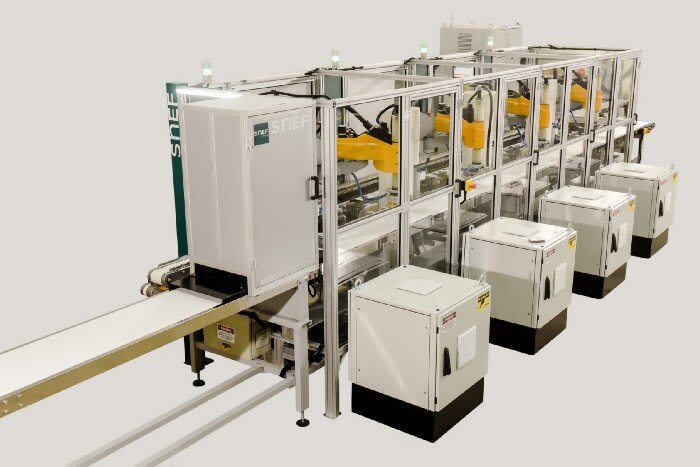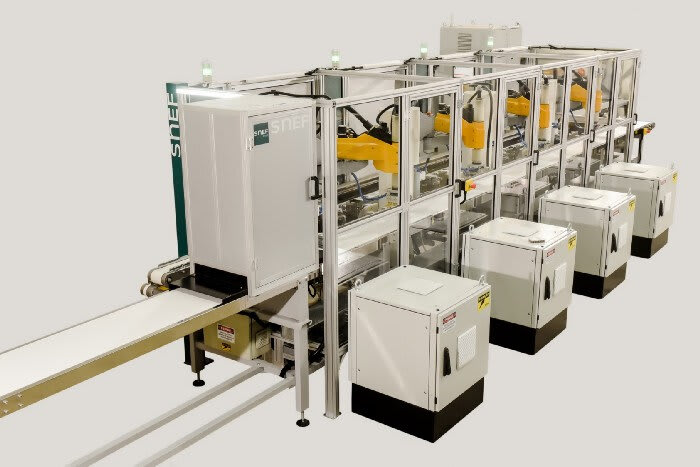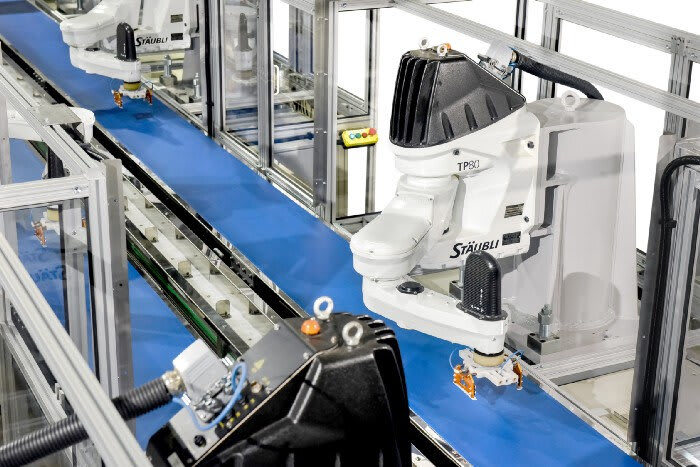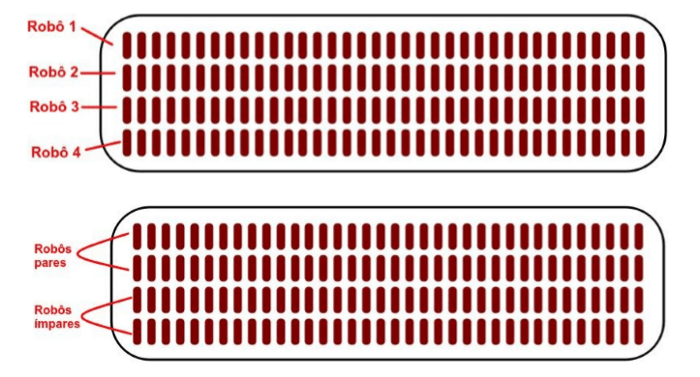SNEF Brasil - Industrial Automation

At first, the decision to automate a process seems to be simple. Buy robots and enjoy the benefits that technology provides. However, after the decision, a very important period begins for the project to materialize: the application study period. It is in this period that a good systems integrator, like SNEF , becomes fundamental. In addition to defining the equipment, protocols and layout, it is time to decide which technique will be applied.
Robotic Cells
Robotic applications have expanded the range of possibilities as they are robust, versatile equipment, with advanced programming languages and high processing capacity. Multiple picks with single place, complex trajectories, pick / place that may vary according to the selected product, collaborative robots working close / together with people or focused on high productivity. One of the techniques that SNEF specializes in is tracking . This technique allows the manipulation of products to be in motion, that is, without the need to stop the conveyor or adjust the production flow.
Tracking
tracking is made possible with the integration of three components: track monitored by encoder, detection system (vision, sensor or both) and robots. This technique allows the application of a robotic cell in the most diverse markets such as food. SNEF , for example, has already applied tracking to fresh products. The company, with its expertise, has been exploring the potential of tracking . It develops drivers for the most varied vision system manufacturers and was the pioneer in the application of the technique on three tracks with mixed detection (two per vision and one per sensor).

Robotic cell for handling chocolates in natura - Vision-oriented tracking, six picks and a static place.

Robotic cell for handling fresh pasta plates - Triple tracking guided by vision and sensor.
Resources
In order to adapt to the most varied processes, there are resources that can be exploited:
Selection by ID: It is possible to segregate products and define which robots will handle them. As an example, this feature can be applied when you have different products in the same cell or two inlet mats.
Selection by area: It is possible to define which area of the conveyor the robots will handle. As an example, this feature can be applied when the handling area is large or when there is more than one product row.

ByPass: Alternate manipulation.
Challenges
As seen, a good understanding of the production process, the study of the application and the definition of the best technique to be applied is essential for the success of the automation of a process. The expertise of the integrator is a fundamental item in the development of the technology needed to complete the project. It is a complex task, however SNEF has a qualified technical staff to develop robotic cells, devices and processes tailored to the automation of the most varied production processes, ensuring efficiency, standardization and productivity.
 Solutions
Solutions2024.06.26
Find out how Snef can help you enhance the efficiency of your plant!
We are excited to announce the acquisition of new machines and equipment to enhance our customers' plant efficiency! and guarantee that systems, components or installations are functioning correctly and in accordance with the established...
 Solutions
Solutions2023.04.10
Drainage projects in photovoltaic parks.
with the growing investment in projects and implementation of solar parks for diversification of energy matrices, the challenges also grow. Challenges is in relation to drainage and rainwater management. So it is necessary to understand the...
 Solutions
Solutions2021.02.10
CYBER CRIMES - A SITIATED WORLD
To avoid cybercrime, companies must structure their information security areas by reinforcing network and security monitoring.

